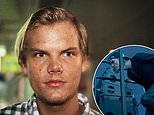The father of a woman killed in the South Korean air crash has questioned why it crashed into a concrete wall after skidding off the end of a runway.
Jeon Je-young, whose daughter Mi-sook was one of 179 who died on board Jeju Airlines flight 2216, says he still cannot believe what happened, as investigations continue.
The Boeing 737-800 belly-landed and erupted in a fireball, colliding with a wall at Muan International Airport on Sunday, in what was South Korea's deadliest air disaster since 1997.
'When I saw the accident video, the plane seemed out of control,' the 71-year-old father said.
'The pilots probably had no choice but to do it. My daughter, who is only in her mid-40s, ended up like this. This is unbelievable.'
Jeon's comments came as experts said that airports should not have a solid concrete wall installed at the end of a runway, without which the tragedy may not have occurred.
Aviation expert David Learmount told Sky News that without the wall, the plane would not have smashed.
'When you saw it slide off the end of the runway, nothing was on fire. The aircraft was completely under control,' he said.
He said on touchdown the aircraft was 'perfect wings level' and was fine until it made contact with the wall, adding 'if there had been no wall there, everybody would be alive now.'

The father of a woman killed in the air crash in South Korea has been speaking about his grief after the loss of his daughter among the 179 killed in the disaster

Jeon Je-young, whose daughter Mi-sook died onboard Jeju Airlines flight 2216 questioned why the aircraft crashed into a wall after skidding off a runway

Aviation expert David Learmount suggested that had it not been for the concrete wall at the end of the runway at Muan International Airport, the tragedy may have been averted and the passengers saved

Jeon showed photos of his daughter stored on his mobile phone

Firefighters search tangled wreckage at Muan International Airport
Experts and pilots questioned why the landing gear and flaps were not extended for the landing, with many assuming that there had been at least a partial failure in the jet's hydraulic systems.
Videos of the crash show that the thrust reverser was visibly deployed on the right engine, but not the left.
Captain Denys Davydov, who flies the Boeing 737-800 for Ukraine International Airlines, said on his YouTube channel: 'It seems they had hydraulics to deploy the one reverser but no flaps or landing gear … As a pilot of the same plane, it's very strange.'
The flight, arriving from the Thai capital with 175 passengers and six crew on board, was seen skidding down the runway with no visible landing gear before crashing into navigation equipment and a wall in an explosion of flames and debris.Jeon said the last time he saw his daughter was when she brought food and next year's calendar to his house on December 21.
Mi-sook had been on her way home after travelling with friends to Bangkok for the Christmas holiday. She is survived by her husband and teenage daughter.
He continued: 'She was almost home, so (she saw) no need to call the family (to leave any final message). She thought she was coming home.
'By the time she took out her phone, the plane probably had crashed.'
Only two people - both crew members - survived the tragedy and were being treated for non-life-threatening injuries after being pulled from the burning wreckage.

The Boeing 737-800 was seen engulfed in a huge ball of fire as it skidded off the 2,800-metre runway

Firefighters carry the body of a passenger from the wreckage of the Boeing 737-800

Relatives of passengers on the doomed flight at Muan International Airport on Sunday
Authorities revealed the names of some of those killed in the crash, triggering grief and rage among the passengers' families gathered in the airport's arrival area.
Crime scene investigators collected saliva swaps from families to run DNA tests to identify the victims.
Mi-sook was identified by her fingerprints, and her family is looking for a funeral home near her town of Gwangju to transport her body there.Her grieving father questioned the decision of pilots to attempt to land on the hard runway rather than ditching in water.
He said: 'The water near the airport is not deep. There are softer fields than this cement runway. Why couldn't the pilot land there instead?'
Australian airline safety expert Geoffrey Dell said: 'I've never seen a bird strike prevent the landing gear from being extended.'
Other pilots suggested one or both the engines could have been producing power as it skidded along the runway, which would explain why it failed to slow down more quickly.

Fire and smoke rising from the tail section of the aircraft. All passengers on board were declared dead, while two cabin crew members miraculously survived the tragedy

An unverified video grab reportedly of the Jeju Air plane shows a burst of fire coming out of the jet's right engine supposedly showing the moment the bird struck
Fire officials reported that the impact of the crash had left the plane 'almost completely destroyed'.
Yeom Dong-bu, a firefighter dispatched to the scene said: 'Through collision twice and explosion, most of the passengers were thrown off the plane, though two crew members luckily survived at the tail end.'
King Charles and Queen Camilla paid tribute to the 179 people killed saying they were 'profoundly saddened to learn of the horrific air accident at Muan' and the families and loved ones of the victims were in their prayers.It comes as experts debated over the possible cause of the air crash, with some saying that a bird strike alone would not have crippled the landing gear.
Airline News editor Geoffrey Thomas said that bird strikes 'typically don't cause the loss of an airplane by themselves' and questioned why firefighters didn't attend to the aircraft as it was landing on the runway.
He said: 'Why weren't they in attendance when the plane touched down? And why did the aircraft touch down so far down the runway? And why was there a brick wall at the end of the runway?'
However, aviation expert Sally Gethin told Sky News a bird strike could cause damage to the engine and the hydraulics to fail.

Firefighters use an excavator to lift burnt seats from the wreckage of the aircraft

A person rescued from the wreckage is wheeled on a stretcher from an ambulance to a medical facility

A firefighter and a dog work near the deadly crash site that killed all 175 passengers and four crew members

She said it was a 'plausible explanation' for causing a landing gear failure, adding that the pilots would have had to make 'very split-second decisions' in such a case.
Marco Chan, a senior lecturer in aviation operations at Buckinghamshire New University, said the evidence suggested the plane had encountered a flock of birds 'leading to suspected bird ingestion into the engines'.A South Korean transport official earlier said that the plane had attempted to land but was told by the air traffic control to hold off after giving a bird strike warning.
The pilot called a Mayday two minutes later and was granted permission to land from the opposite direction.
Experts cautioned that air accidents are usually caused by multiple contributing factors and it can take months to piece together the sequence of events in and outside the plane.
Jeju Airlines chief executive Kim E-bae gave a deep bow with other senior company officials as he apologised to bereaved families and said he feels 'full responsibility' for the incident in a televised news conference.
He added the company had not identified any mechanical problems with the aircraft following regular checks and that he would wait for the results of government investigations into the cause of the incident.
A period of national mourning until January 4 was declared by South Korea's acting President Choi Sang-mok.
Under global aviation rules, South Korea will lead a civil investigation, involving the US National Transportation Safety Board as the aircraft was American-made and built.





















































































































































































































































































